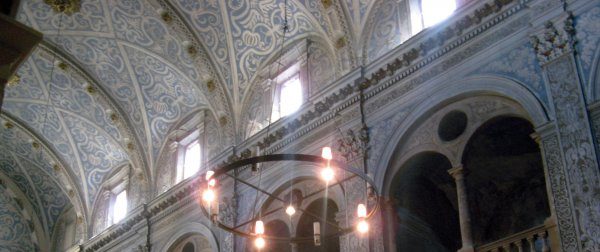
Jesuits arrived at Tarragona after Cardinal Gaspar Cervantes de Gaeta’s instructions. The Cathedral statehouse gave permission to the building of the church, which started the works in 1576, after Cardinal Cervantes death. It was a slow construction due to economical circumstances, although Archbishop Antoni Agustí Albanell strongly pushed the work forward. It is believed, its official opening was in 1584 –without being completely finished. The church belonged to the Company of Jesus (it was part of the novitiate house) and blessed under the invocation of the Three Wise Men following Cardinal Cervantes’s devotion.
Onofre Morell was an important benefactor, whose coat of arms is visible on the church’s facade. His tombstone was moved from the high altar to a wall in 1969.
In 1767, King Carlos III expelled the order of the Jesuits from Spain and donated the church to the order of the Augustinians. He changed his name to that of Saint Augustine. In 1835 the Confiscation of Mendizabal expelled the Augustinians who were living there until then. From that moment on, the cult in the church remained but the convent began to be used as a barracks.
The barracks was demolished for the construction of Plaça Verdaguer. Claretians of the Choir of Mary were the last religious order to keep the church until they left in 2014. Since then, the church depends on the Sant Francesc Parish. Saint Augustine’s Church is now the permanent place for the ten Easter steps and for the headquarters of the Group of Holy Week Associations of Tarragona.